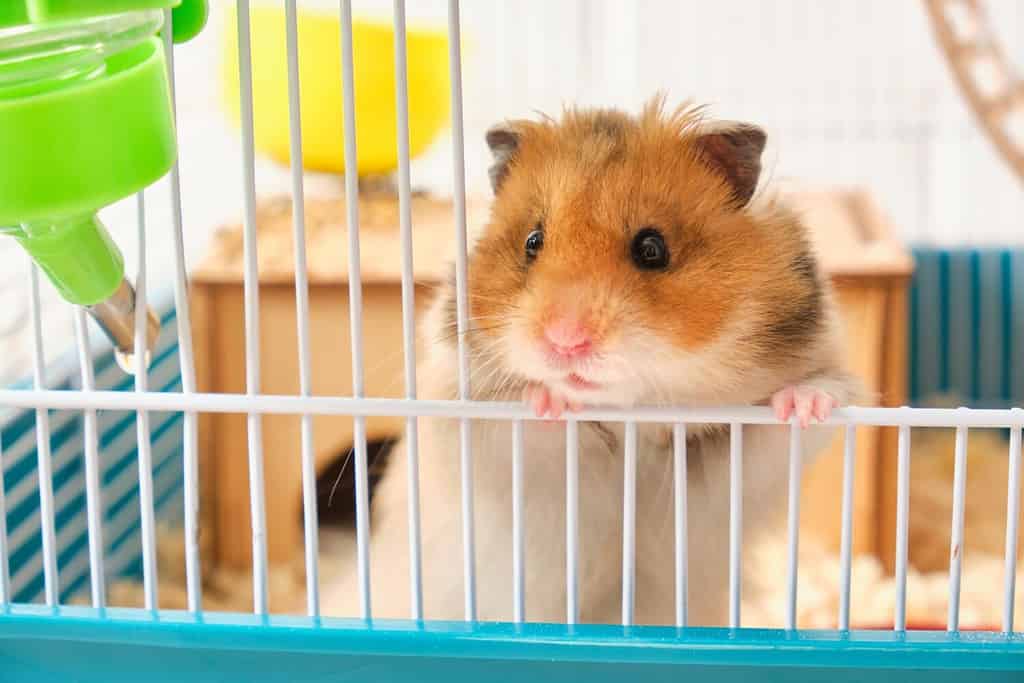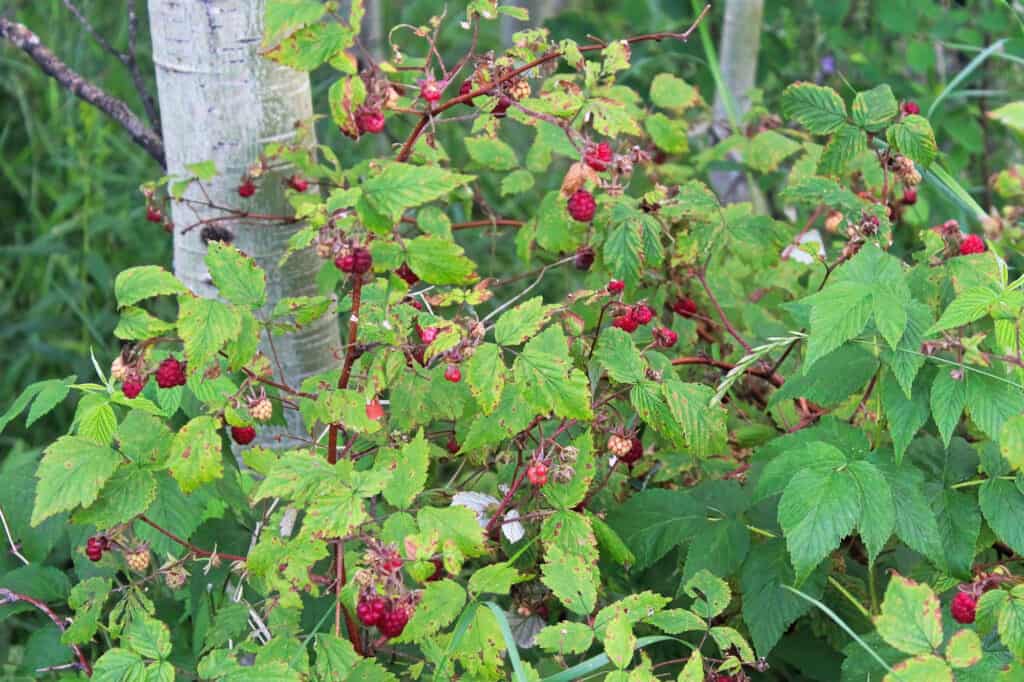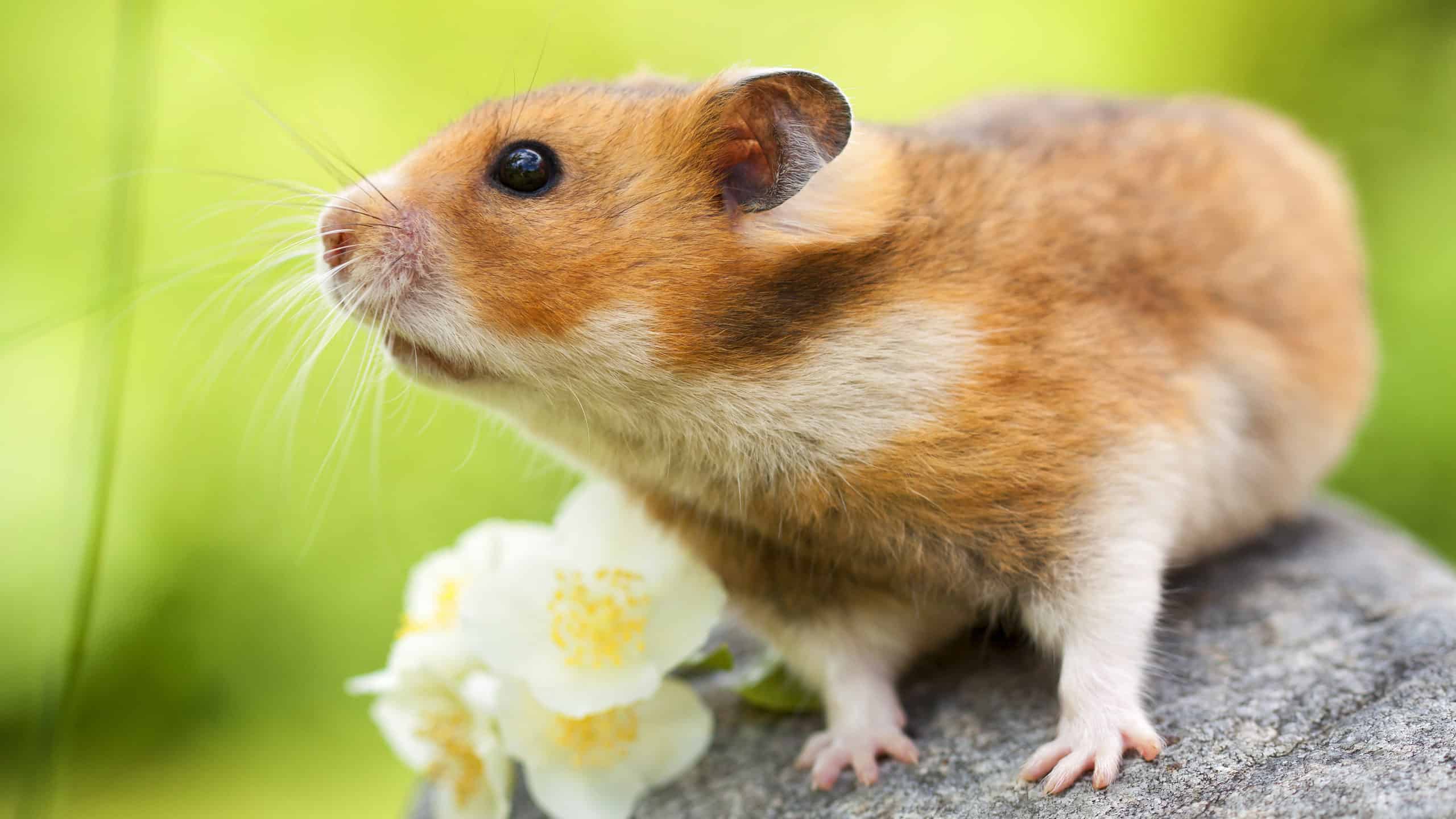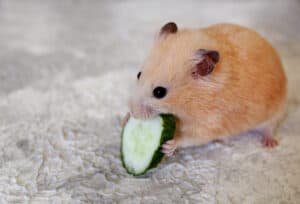Hamsters have a wide range of tastes and love a varied diet of fruits, grains, and vegetables. Humans often keep hampsters as pets and wonder what they should feed them to keep them fit, healthy, and happy. The answer is pretty easy overall but more complex when you boil it down and look at it more closely. Put simply: feed your hamster a diet that most closely resembles what they would eat in the wild. More complex: what do hamsters eat in the wild? Today, we’ll tackle a few foods hamsters can and can’t eat but we’ll mostly focus on answering one big question: Can hamsters eat raspberries?
Can Hamsters Eat Raspberries?

Black raspberries and raspberries are very similar to each other, so you should treat them the same way when considering feeding them to your hamster.
©iStock.com/billberryphotography
In truth, the answer depends on the species of hamster. For example, one hamster care website states that some hamsters cannot tolerate high levels of sugar or acidity and should not eat raspberries. Overall, we recommend taking care and doing your research when feeding raspberries to your hamsters. The Society for the Prevention of Cruelty to Animals has a feeding guide for small pets that you might find helpful.
What Species of Hamsters Can Eat Raspberries?

Some species of hamsters are more sensitive to sugars and acidic foods than others.
©TShaKopy/Shutterstock.com
Only feed raspberries to non-dwarf species of hamster. Syrian hamsters and Roborovski hamsters are two varieties of hamsters that can easily tolerate a small amount of sugar and acidity in their diet. This is due, in part, to their larger size. You should avoid feeding raspberries to Chinese hamsters, Campbell’s dwarf hamsters, and winter white dwarf hamsters.
How Many Raspberries Can I Feed My Hamsper?
As we mentioned before, we cannot advise feeding raspberries to your dwarf hamsters. Breeds of hamsters that do tolerate raspberries should only be fed a small amount of the fruit – one to two berries a week at most. Also, these fruits are very filling. It is best to give them as a treat after your hamster has already eaten its main meal.
What are the Risks of Feeding My Hamster Raspberries?
Hamsters, especially dwarf breeds, are sensitive to acidity and prone to diabetes and obesity. Raspberries are high in natural sugars and acidity. Overconsumption of sweet and acidic foods can lead to diarrhea, obesity, and diabetes. Obesity and diabetes are life-threatening conditions for rodents and should be taken seriously. Make sure to monitor your pet’s food consumption to ensure they are getting the right nutrients in the proper proportions.
What About Health Benefits?
Yes, there are also some benefits to feeding raspberries to your hamster. Raspberries are high in vitamins C, K, and E. They also contain essential minerals – iron, calcium, manganese, and potassium. These vitamins and minerals promote hydration and bone health, regulate blood pressure and metabolism, and support the immune system. So, if your hamster can tolerate eating raspberries, there are some benefits to sometimes offering them as a treat!
What About Raspberry Leaves?

Red and black raspberry leaves are great sources of nutrition for your hamster.
©Amelia Martin/Shutterstock.com
Raspberry leaves are a healthy part of a hamster’s diet! You can feed the leaves of red and black raspberry plants to your furry friend, and with health benefits! Raspberry leaves would be a common dietary staple for many wild hamster breeds and, thus, most domestic breeds can tolerate and benefit from them.
How Many Raspberry Leaves Should I Feed My Hamster?
You can feed your hamster one or two raspberry leaves a day, once or twice per week. Smaller hamsters should have smaller amounts. You can feed your hamster fresh or dried raspberry leaves. Do not feed your hamster raspberry thorns. Make sure to cover all of the dietary needs of your hamster. Overfeeding is one of the worst things you can do for your hamster and can lead to a series of health complications.
What are the Benefits of Raspberry Leaves?
Raspberry leaves are low in sugar and high in fiber. The fibrous nature of the leaves can assist your hamster’s metabolism along with strengthening bones and teeth. The leaves are high in vitamins and minerals and have rich antioxidant properties.
What are the Risks of Feeding My Hamster Rasberry Leaves?
There are only a couple of risks related to feeding raspberry leaves to your hamster. The first is that the high moisture content of the leaves can cause diarrhea if given in excess. This moisture level can also fill your hamster up too much to eat a regular meal. Next, it’s important to point out that raspberry leaves have natural diuretic and laxative properties. Overfeeding rich, leafy greens can lead to a series of gastrointestinal issues. Additionally, raspberry leaves can harm baby hamsters. The hair-like bristles on the leaves can hurt their mouths and make it hard for them to eat.
Do I Need to Prepare the Raspberries and Leaves?
You can feed both of these treats fresh, but make sure to rinse or wash the fruit and leaves before feeding. Hamsters are very sensitive to contaminants like pesticides and rinsing any fresh produce you give them is a wise choice. It’s even better if you can source local and organic treats for your hamster friends to reduce the risk of pesticide consumption.
Are There Fruits Hamsters Shouldn’t Eat?

Avoid feeding your hamster citrus in any quantity.
©PosiNote/Shutterstock.com
You should never feed your hamster any variety of citrus fruit. The acidity levels in fruits such as oranges, tangerines, lemons, limes, and pineapples are too high for our sweet little rodent friends. Many hamsters will actually avoid eating these fruits on their own, but you should be careful and simply keep the sensitive stomach of your hamsters safe from harm. Other fruits should be fed in very small portions and as supplements to the diet. Fruit can be good for your hamster, but too much sugar – even natural – can lead to diabetes.
What Foods Are Unsafe for Hamsters?
You should never feed your hamster dark chocolate, whole celery stalks, onions, peanuts, potatoes, garlic, uncooked kidney beans, tomato leaves, sugary foods, or spicy foods. Dark chocolate, uncooked kidney beans, and tomato leaves are all expressly toxic to hamsters, while everything else on the list is unsafe or outright dangerous to feed to your little buddies. Avoid food mixes high in seeds and nuts as a staple diet. You want a lower-fat diet for your hamsters, as they are very prone to obesity.
What Kinds of Treats Can I Give My Hamster?

Carrots are a great snack for your hamster!
©stock_shot/Shutterstock.com
Your hamster would benefit from treats that promote a healthy and balanced diet. A great example of this is dark green veggies! Feed your hamster small amounts of spinach, carrot tops, broccoli spears, and artichoke as a healthy treat. Very small amounts of banana, apple slices (no skin or seeds), and pears are great options too! For a regular snack, try out Timothy Hay, cucumbers, or small carrot slices.
What is the Best Food for my Hamster?
There are several quality staple diet options for your pets. Our helpful guide on the best hamster foods available may point you in the right direction. We’ll reference the guide here by saying you can’t go wrong with Kaytee Fiesta Pet Hamster Food or Oxbow Essentials Hamster and Gerbil Food for the more picky eater. Our guide also recommends great treats and weighs the pros and cons of each recipe.
Can I Make my own Hamster Food?
Yes, you absolutely can, but it may be more time-consuming than you think! Make sure you are looking after every aspect of your pets’ dietary needs and restrictions as you build their diet. This can be much more challenging than you think, so be sure to do a lot of research before switching diets. You’ll want the bulk of your hamsters’ diet to be carbohydrates and healthy fats, with a rich balance of vitamins and minerals. Restrict your use of sugars and empty calories as much as possible!
Thank you for reading! Have some feedback for us? Contact the AZ Animals editorial team.








